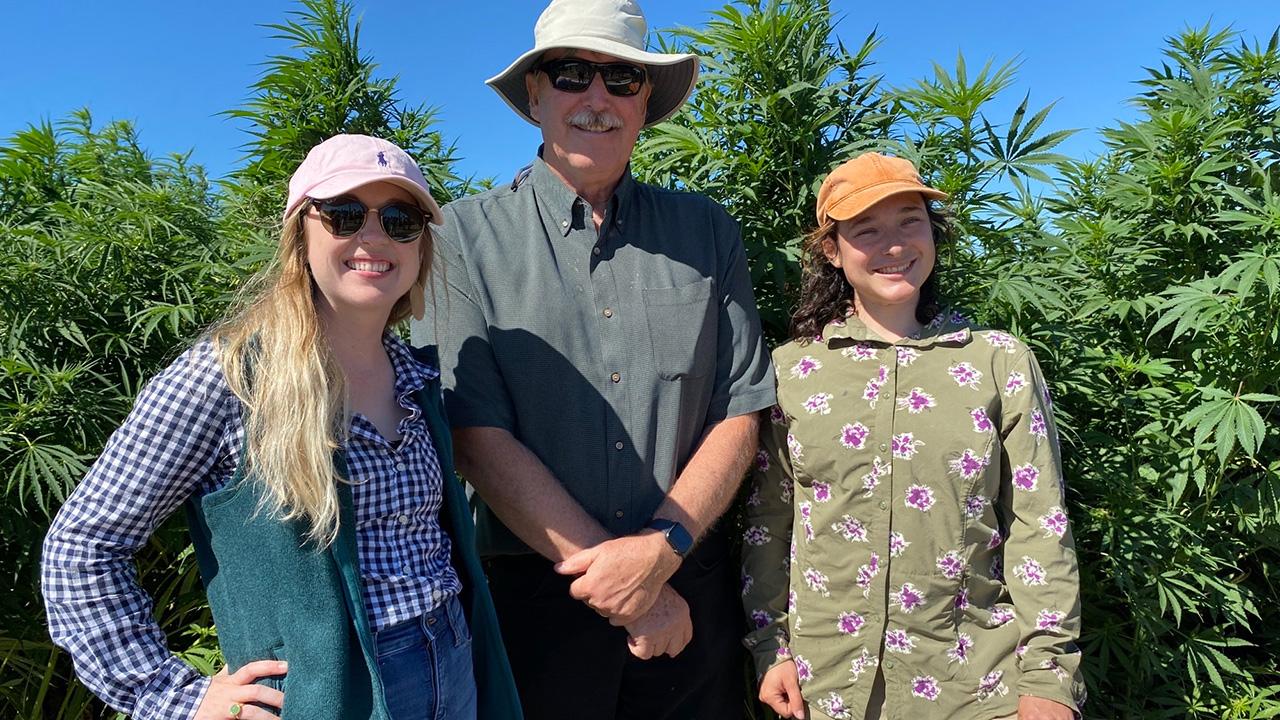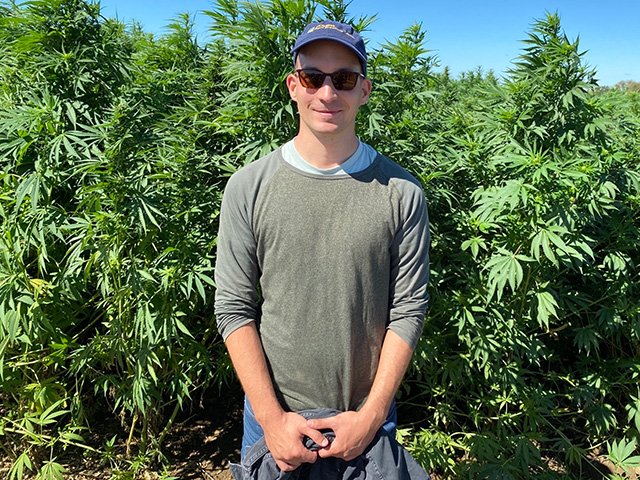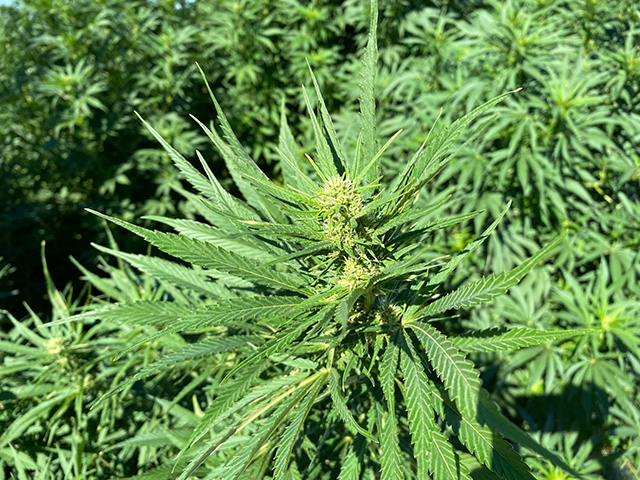
Better hemp on the horizon
Studies seek better management practices, varieties, after research hiatus
The University of California’s first Industrial Hemp Field Day presented work by the UC Davis Department of Plant Sciences to help farmers manage common problems and improve their yields. Researchers discussed their latest findings to better manage hemp production, touching on diseases, weeds, insects, pesticide resistance, biological controls and regulatory processes. Field demonstrations included ongoing trials on nitrogen and water use.
An estimated 80 to 100 growers turned out for the Sept. 22 event, showing the demand for scientific guidance for legal hemp cultivation.

Reports on progress breeding new varieties of hemp came from Daniel Pap, a postdoctoral researcher, and Charlie Brummer, a professor and director of the UC Davis Center for Plant Breeding. Pap is studying the genetic material of hemp seeds stored for scientific investigation by the United States Department of Agriculture. He’s trying to find plants with key qualities for industrial production, such as pest resistance, CBD content and usefulness as a grain, in textiles and in building materials.
“It’s very important, because germplasm for breeding is a national interest,” Pap said.
Bob Hutmacher reported on the tremendous differences in water use among different varieties that are likely to be grown in California, ranging from very short-season (autoflower types) to full season (photoperiod-sensitive) types. Hutmacher, a recently retired professor emeritus of Cooperative Extension, worked with Oregon State University on the study funded by the USDA.
Maya Hotz, a staff researcher, reported some early results from studies on nitrogen fertilizer rate response being conducted at two sites for both autoflower and full-season types. The study is sponsored by the Fertilizer Research and Education Program of the California Department of Food and Agriculture.
Information about cannabis varieties collected in Iran was presented by Mahboubeh Dehnavi, a visiting scholar in the Taylor Lab.
State regulators helped the audience understand the regulatory hurdles encountered with growing hemp as a commercial crop.
Research continues to develop new varieties and improve the understanding of pest management and agronomic practices. Such research had been banned by federal law since 1970, but was legalized by the bi-partisan Agriculture Improvement Act of 2018.
The inaugural field day was held in collaboration with Kadie Britt, a post-doctoral scholar at UC Riverside. Britt is working on pest management issues at the Kearney Research and Extension Center in Parlier, Calif.
Hemp study a new area of research

Research on campus and at the Research and Extension Centers addresses important issues such as optimum plant density for different varieties, irrigation need, response to drought, sampling methods for THC, CBD and quality comparisons, and response of industrial hemp to nitrogen fertilizers.
Brad Hanson, a professor of Cooperative Extension and weed management specialist, is working with UCCE Farm Advisor Sara Light to evaluate how hemp leaves respond to injury from herbicides used on a range of other crops. They’re also developing tools to assess crop injury symptoms that might occur in the field.
In the future, work may also focus on hemp varieties and management practices best suited for production of industrial hemp as a fiber crop.
Industrial hemp research has been conducted at the UC Davis Research Farm and at the UC West Side Research and Extension Center (Five Points) since 2019, led by Hutmacher and Dan Putnam, a professor of Cooperative Extension. Breeding began about the same time, led by Brummer and post-doctoral researchers. This work stemmed from frequent questions brought by farmers about how to produce and manage industrial hemp, and questions about the appropriate varieties to grow.
Industrial hemp is a close relative of marijuana but without the physiologically active compound THC. In 2019, it became legal to grow commercially. Industrial hemp is used primarily for natural remedies, as the active compound CBD may have healing properties.
In 2021 across the United States, legal hemp was grown outdoors on nearly 33,500 acres, with another 15.6 million square feet of indoor cultivation, together worth $824 million, according to the U.S. Department of Agriculture.
Media Resources
- UC Davis Cannabis & Hemp Research Center
- Trina Kleist, tkleist@ucdavis.edu, (530) 754-6148 or (530) 601-6846
